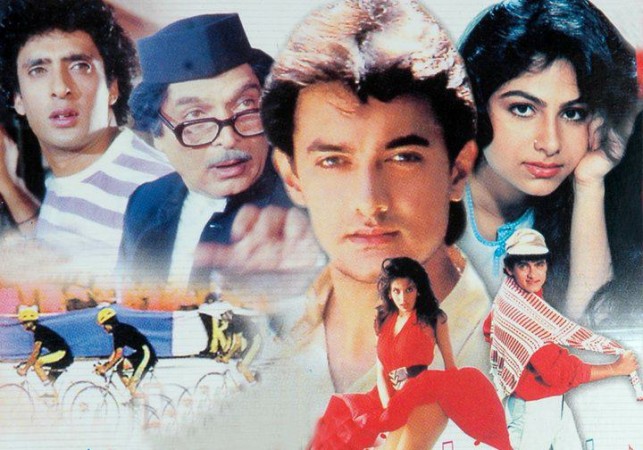
Songs have a special power in Indian cinema to elicit feelings, tell stories, and capture the essence of moments. Among them, there are some songs that redefine cinematic artistry by introducing cutting-edge methods in addition to becoming timeless classics. "Pehla Nasha," a ground-breaking masterpiece from the movie "Jo Jeeta Wohi Sikandar," is one example. This legendary song, which was first performed in 1992, captured audiences' attention with its enchanting notes as well as setting a significant record by becoming the first Bollywood song to be shot entirely in slow motion. An entirely new era in cinematic musicality was inaugurated by the meticulous synchronization of lyrics and choreography as well as the ascent of the talented newcomer Farah Khan.
A delicate and evocative melody called "Pehla Nasha," composed by Jatin-Lalit and beautifully performed by Udit Narayan and Sadhana Sargam, is the highlight of the movie "Jo Jeeta Wohi Sikandar." The unique slow-motion cinematography used in this song's video, which is unheard of in Bollywood music videos, is what distinguishes it from other songs. The choice to film the entire song in slow motion gave the visuals a layer of ethereal beauty and allowed viewers to savor each fleeting emotion and moment. A mesmerizing symphony of elegance was produced by the elegant gestures, the delicate facial expressions, and the seamless fusion of music and movement.
It was difficult to match the lyrics to the actors' movements when making a song in slow motion, among other unique difficulties. The actors had to lip-sync their performances to match the slow tempo of the song, which required careful planning and coordination. "Pehla Nasha" was transformed into a painstakingly choreographed ballet by this subtle fusing of lyrics and movement, elevating it from a straightforward musical passage to a beguiling visual masterpiece.
In addition to introducing a ground-breaking method of filming, "Pehla Nasha" also saw the debut of Farah Khan, a choreographer who would go on to become well-known throughout the Indian film industry. The choreography for the song's slow-motion was made possible in large part by her creative vision and commitment to creating graceful, evocative movements. "Pehla Nasha" had a sense of cinematic magic that connected with viewers and laid the groundwork for Farah Khan's illustrious career as a choreographer thanks to her intuitive understanding of music, motion, and emotion.
Beyond its immediate success, "Pehla Nasha" from "Jo Jeeta Wohi Sikandar" was a huge hit. The innovative slow-motion technique used in the song, the coordinated lip movements, and Farah Khan's choreography paved the way for subsequent works of cinematic art. By demonstrating the capability of seamlessly fusing music, motion, and emotion to create captivating visuals, it gave the discipline of choreography a new dimension.
The song "Pehla Nasha" from the 1992 film "Jo Jeeta Wohi Sikandar" is regarded as a triumph of cinema because it successfully brought together music, motion, and innovation. The song was transformed into a charming ballet of emotions by the use of slow-motion cinematography and coordinated lip movements. The legacy of the song also includes Farah Khan's ascent to the status of a trailblazing choreographer who helped to define the direction of dance in Bollywood. The film "Pehla Nasha" serves as a living example of the inventiveness that has fueled the development of Indian cinema and serves as a reminder of the limitless potential that arises when music, motion, and artistic expression are combined on screen.
Junglee's Melodic Path and the Creation of Kashmir Ki Kali
The Mesmerizing Spell of Kaaton Se Kheench Ke from the Classic Guide
Yeh Reshmi Zulfein Scripted Mumtaz's Path to Bollywood Glory